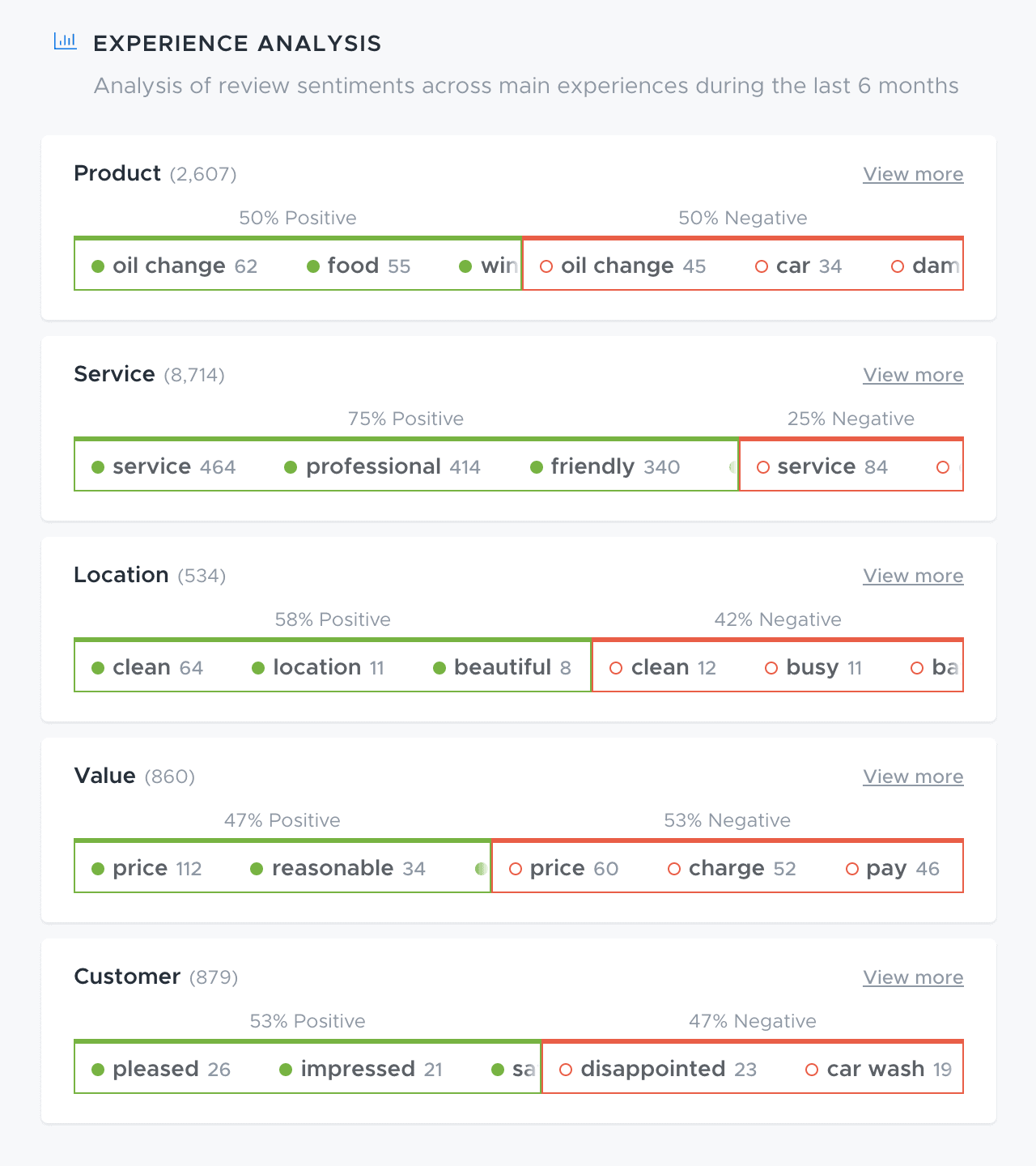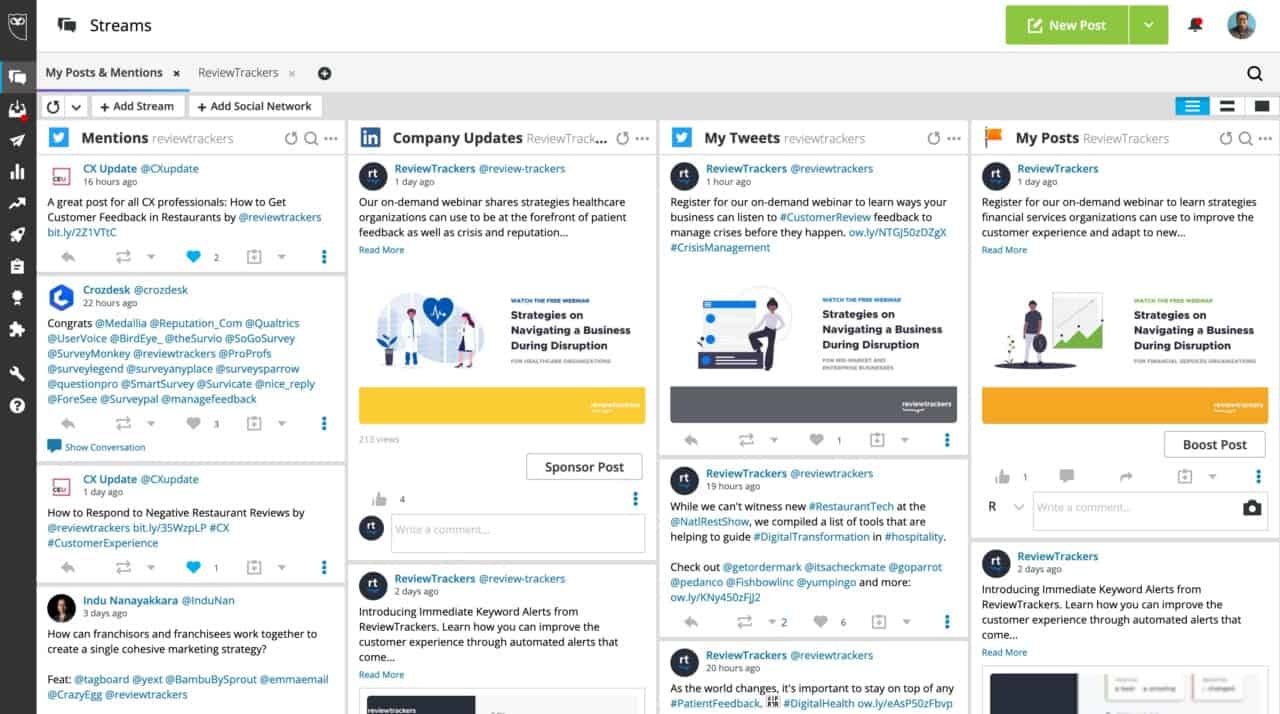Many executives are up against multiple challenges when making franchise reputation management an integral part of their marketing strategy.
Because of the nature of franchises, decision-makers have to deal with reputation management and marketing on the corporate level, while also supporting the needs and opportunities of franchisees, who have their own local reputation issues, ideas, and goals. To ensure that brand managers can satisfy both groups, we’ll walk through a number of tactics that you can apply to individual locations as well as a broader corporate or scale level.
Elevating Franchise Reputation Management Practices
Optimizing your franchise reputation management strategy doesn’t happen overnight, especially with larger organizations, which have decision-makers and stakeholders at a local and corporate level. Showing the value of each tactic to both parties not only makes the process easier; it can lead to better customer acquisition and pave the way for a strong customer retention plan.
Claim and Update Business Listings
By planting flags on digital properties where customers are already talking about the brand, you provide official information about your franchise brand and locations that consumers will trust. Listings to claim include social media, business review sites, local directories, online yellow pages, and even mobile apps and services with a business discovery feature.
By claiming your business listings, updating your information, and maintaining an active presence across multiple sites, your franchise reputation is easily managed at local and corporate levels. By also taking advantage of local SEO methods, you can further increase the exposure of these listings to optimize customer acquisition efforts.
Doing so also gives your marketing leaders and franchisees a chance to respond to specific customer feedback, especially negative reviews.
Respond to Online Reviews
Your franchisees are obviously not going to be happy reading a 1-star review or a negative social media comment, which is why learning how to respond to negative reviews needs to be a part of your franchise reputation management strategy. With a few templates, teams can write comments proactively and with care. Responses that address issues and acknowledge the feedback go a long way to gaining consumer trust.
In fact, customer reviews data shows that 44.6% of consumers are more likely to visit a local business if the owner responds to negative reviews, but only 36.7% of customers actually get a response to their feedback. Taking the time to acknowledge their experience and addressing issues shows that you value not just their business, but their opinions about how to improve the customer experience in each location for the next customer.
It’s also worth responding to positive reviews and high ratings even if it’s just to say “thank you.” By letting customers know you appreciate their unsolicited feedback, you strengthen your franchise reputation and reinforce positive customer experiences.
Gather Insights with Customer Feedback
Customer reviews are not just for other consumers; they are also used to by the franchise to improve internal operations and the overall customer experience.
Do the staff members in your newest franchise location need more training? Are diners really happy with the new menu you rolled out recently across your chains? What are the most common complaints about your product, and is your customer service team coming through? All of these insights are readily available in a plethora of customer feedback. New technology such as natural language processing makes it even easier for stakeholders to see which keywords in a review led to a positive or negative sentiment.

A classic example of this in action comes from Hwy 55 Burgers, Shakes, and Fries. When the 134-location diner chain discovered that the keyword “waitress” was a part of numerous negative reviews, the brand made changes to its training processes so that wait staff could meet the expectations of consumers when it came to seating and serving.
Engage with Consumers on Social Media
Franchise reputation management also involves community management outside of listings. The right social media reputation management plan not only incorporates effective content creation; it also listens to consumer conversations.
Engaging on social media with people who talk about the organization humanizes the brand and makes it more approachable even before the customer walks through the door. Utilizing something like a Hootsuite reputation management strategy can work wonders for any franchise as it lets brands control multiple accounts across different social media platforms from one dashboard, which makes it easy to create content that has the right brand voice and also resonates with customers across multiple locations.

Create Franchise Location Pages
Think of each page on a franchise brand site as individual websites for each franchise or chain location. When optimized these pages can feature content for its specific audience, unified branding, and social proof that easily converts customers. In addition, the pages improve your SEO performance, which further benefits franchise reputation and supports the marketing efforts of your franchisees. When creating franchise location pages, consider the following:
Keep the URL Simple
Let’s say your website URL is businessname.com. The URL of your location pages can be as simple as businessname.com/city. This makes it easier for developers to organize your website as more franchise locations appear, and its overall simplicity makes it easier for people to type and visit on mobile devices or on a computer.
Utilize NAP
NAP stands for business Name, Address, and Phone number. This information must be present on each of your location pages and correspond to each individual franchise location. Adding this information doesn’t just help in terms of overall presentation; it ensures that the right pages show up when someone conducts a local search near your franchise.
Add Relevant Local Content
Apart from entering your franchisees’ NAP to your location pages, you can also provide additional details to better inform each site visitor. This can include:
- Unique store descriptions
- Operating hours
- “About Us” section
- Local news
- Deals and promotions
- Information about the team or staff
- Customer reviews and testimonials specific to the location
- Case studies
Include a Google Map
This allows users and potential customers to immediately see the franchise location (relevant to where they are located) and get directions. Utilizing a Google Map display on your site also adds some familiarity for the user.
Optimize the Pages
To boost the location signals on your location pages, apply optimization techniques like title tags, meta descriptions, schema markup, and first-party reviews. These elements help search engines “read” each page to better inform consumers when your site pops up in search engine results pages.
To automatically display a set of featured reviews on your website, you can use a review widget suite like Amplify.
Foster Customer Loyalty
One of the most effective franchise reputation management strategies is to let your happiest customers build buzz around your brand. To keep these promoters, you’ll need to employ a few strategies to keep them happy and make them loyal.
Customer loyalty programs, rewards, and referral programs tend to work well for franchise brands. Make an effort on social media to respond when people are posting, tweeting, or snapping a picture of themselves at your franchise. On location websites, showcase rave reviews from delighted customers. Putting customers front and center of your reputation management plan builds trust and confidence. They like knowing that the brand notices their engagement. Uplifting that positive word of mouth for your franchise does wonders for your online reputation while ensuring a boost in customer retention.
Achieve Customer-First Transformation for Franchise Reputation Management
In the age of Google, Facebook, and Yelp, more consumers than ever are making their voices heard on digital channels such as social media and online review sites. Having an open ear to their thoughts improves customer satisfaction, which in turn boosts your overall reputation.
By using consumer feedback, you can create the right insight-based decisions that lead to more loyal customers while new ones continue to come through the door. The key is to listen: wherever your customers are talking, listen in and join the conversation.